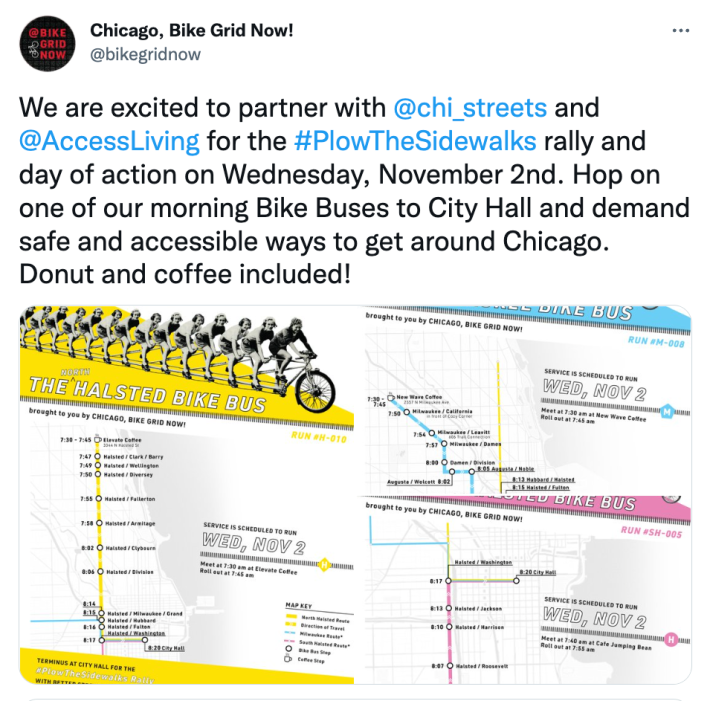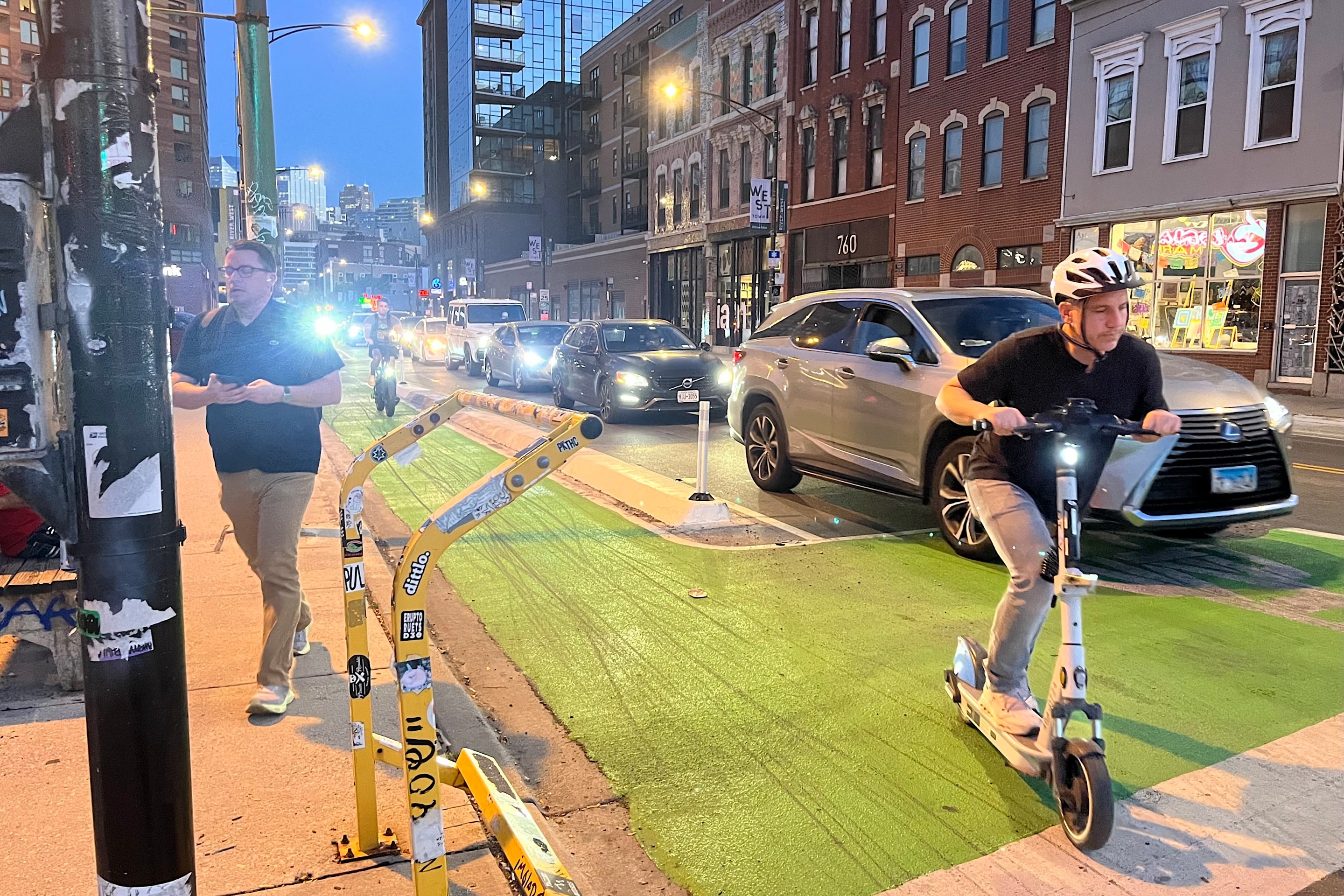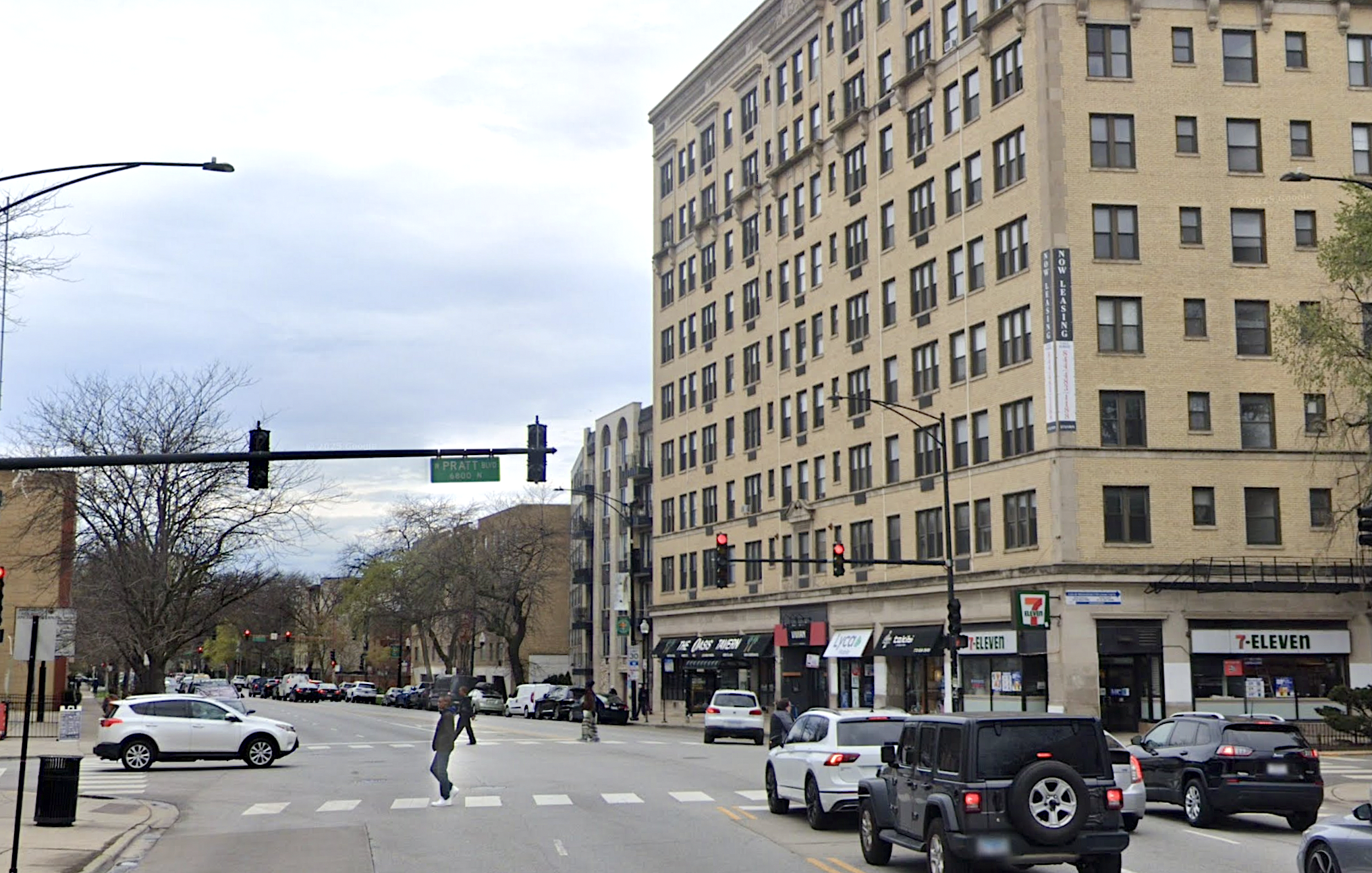Ever since the Great Chicago Blizzard of 1979, when Mayor Michael Bilandic failed to adequately respond to the massive snowstorm, and lost reelection as a result, city officials have been fairly obsessed with keeping the transportation system functioning – for drivers that is. Streets and Sanitation has been known to salt the mixed-traffic lanes of main streets for motorists if there's even a rumor of precipitation. But sidewalks, bus shelters, and bikeways are often clogged with the white stuff, making it especially difficult to get around town without a car, particularly for people with disabilities, seniors, and families with small children.
Fortunately there's a growing movement to address this unfair situation, which often leaves vulnerable Chicagoans trapped in their homes after major weather events. This Wednesday, November 2, the disability rights group Access Living, the transportation advocacy organization Better Streets Chicago, and other supporters will hold a #PlowTheSidewalks rally to demand citywide municipal snow and ice clearance of walkways, bikeways, and transit facilities. The demonstration will take place at 9 a.m. on the first floor of City Hall, 121 N. La Salle St. All attendees are encouraged to bring signs voicing support for the taking the safety and convenience of people who get around by wheelchair, on foot, bike, and bus as seriously as that of car drivers.
"Even when enforced, the city of Chicago’s current policy of leaving sidewalk snow and ice removal up to the adjacent property owner does not work – and fines don’t shovel sidewalks," the event organizers said in a statement. "One block might get cleared, but the next is left covered in snow and ice. Mounds of snow get piled up at bus stops. Crosswalks get plowed in by the city, and city departments just point fingers. Failure to clear sidewalks of snow and ice traps people who use wheelchairs, walkers or canes. It impedes parents with strollers. It makes accessing public transit difficult to impossible. And it leaves everyone at risk of slipping and falling."
As detailed on the Access Living website, the advocates are proposing a $750,000 pilot project that would include six roughly 2.5-square-mile districts, including both main streets and residential roadways. They identified 15 potential pilot zones, show in the map below. Each district may include parts of multiple wards.
As it stands, the owners of adjacent properties are responsible for removing snow and ice from sidewalks, as detailed in the Municipal Code of Chicago (4-4-310 and 10-8-180): "A property owner, lessee, tenant, or other relevant person is responsible for removing snow and ice from any sidewalk abutting such [property], and any sidewalk ramps intersecting such sidewalks."
But even if all property owners who were able to do so did the right thing by keeping their sidewalks clear, there would be gaps in coverage, including
- Curb cuts
- Bus shelters
- Highway underpasses and viaducts
- Bridges
- Industrial sites
- Sick, injured, or elderly property owners
- Vacant buildings or lots
The #PlowTheSidewalks proponents note that municipal sidewalk clearance is already a thing after heavy snowfalls in Chicagoland suburbs like Wilmette and Forest Park, as well as other U.S. cities like Rochester and Syracuse, New York; Minneapolis; and Holland, Michigan, as well as large Canadian metropolises like Toronto and Montreal.
Chicago, Bike Grid Now is leading Bike Bus group rides to the rally from Pilsen, Logan Square, and Lakeview.

The Plow the Sidewalks proposal is endorsed by the following politicians and advocacy organizations.
City Council members
- Ald. Daniel La Spata (1st Ward)
- Ald. Jeanette Taylor (20th Ward)
- Ald. Michael Rodriguez (22nd Ward)
- Ald. Byron Sigcho-Lopez (25th Ward)
- Ald. Rossana Rodriguez (33rd Ward)
- Ald. Carlos Ramirez-Rosa (35th Ward)
- Ald. Gilbert Villegas (36th Ward)
- Ald. Andre Vasquez (40th Ward)
- Ald. Matt Martin (47th Ward)
- Ald. Maria Hadden (49th Ward)
Organizations:
- Active Transportation Alliance
- AARP – Illinois
- Chicago, Bike Grid Now!
- Chicago Family Biking
- Chicago Jobs with Justice
- Commuters Take Action
- Independent Drivers Guild of Illinois
- Metropolitan Planning Council





